The Young Ones
Photographs of children in the 1960s show how much things have changed in Singapore in the last six decades.
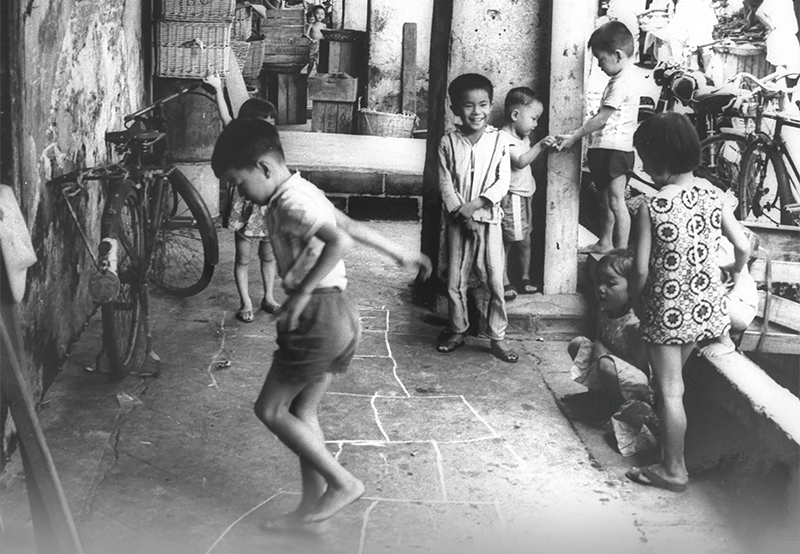 Children at play, 1962. Captek, kuti-kuti, five stones, hopscotch, gasing and even tikam-tikam – games played by children of every race. © Urban Redevelopment Authority. All rights reserved.
Children at play, 1962. Captek, kuti-kuti, five stones, hopscotch, gasing and even tikam-tikam – games played by children of every race. © Urban Redevelopment Authority. All rights reserved.
A good number of the silver-haired men and women of the Merdeka generation have retired today. They now while away their time chatting with friends over coffee and playing with their grandchildren. But back in the 1960s, these men and women were young boys and girls, bursting with life, energy and potential, much like Singapore itself as the new nation found its feet.
The following photographs of children are from the pictorial book, There Was a Time, which was produced in collaboration with the National Archives of Singapore. The book portrays the rhythms of daily life between 1959 and 1965. This was a pivotal period in Singapore’s history as it negotiated the shaky transition from British crown colony to self-rule, then being part of the short-lived but tumultuous Federation of Malaysia before becoming an independent and sovereign nation.
This was a time when Singapore had just begun its process of modernisation. Kampong folk moved into high-rise flats, new careers were forged in factories built in Jurong, the trading of stocks and shares began in Raffles Place, television was introduced to Singapore, and the new red-brick National Library opened on Stamford Road.
Yet, some things carried on as they had before. Bumboats still jostled on the fetid waters of the Singapore River, children played on five-footways, families enjoyed the sea breeze along Queen Elizabeth Walk, and eating out at roadside hawker stalls was a way of life.
This small selection of photographs is a reminder that every senior citizen today was once a playful, lively child and that it is important to remember, as Cliff Richard so famously sang in his 1962 record-breaking pop single, “The Young Ones”, to “live, love, while the flame is strong, ‘cause we may not be the young ones, very long”.
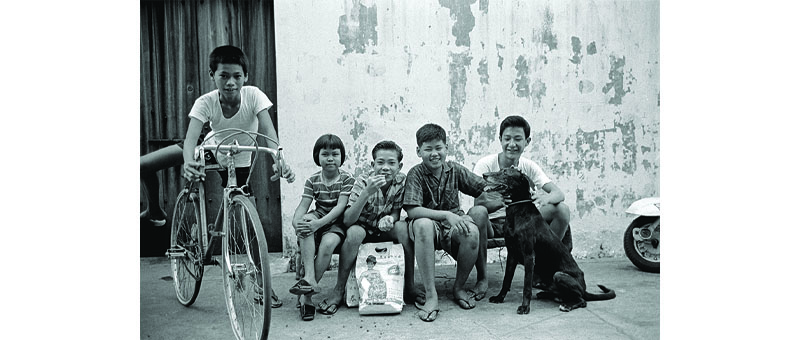 Friends posing for a photo in a back lane, 1963. Ministry of Information and the Arts Collection, courtesy of National Archives of Singapore.
Friends posing for a photo in a back lane, 1963. Ministry of Information and the Arts Collection, courtesy of National Archives of Singapore.
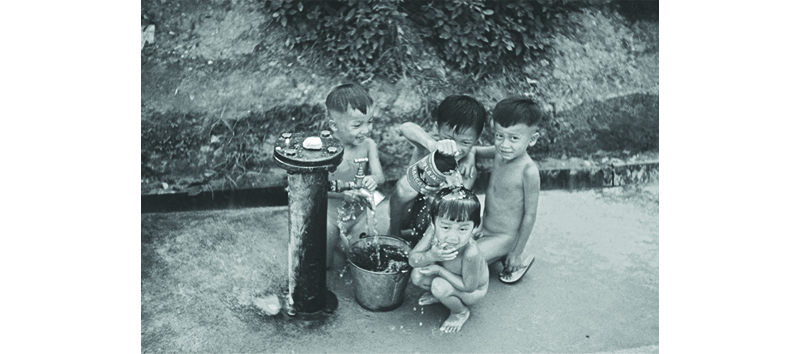 Running tap water, Seletar, 1960. The Rural and Urban Services Advisory Council had a water supply scheme in the 1960s, but some villages would not get piped water until much later. The Ralph Charles Saunders Collection, courtesy of National Archives of Singapore.
Running tap water, Seletar, 1960. The Rural and Urban Services Advisory Council had a water supply scheme in the 1960s, but some villages would not get piped water until much later. The Ralph Charles Saunders Collection, courtesy of National Archives of Singapore.
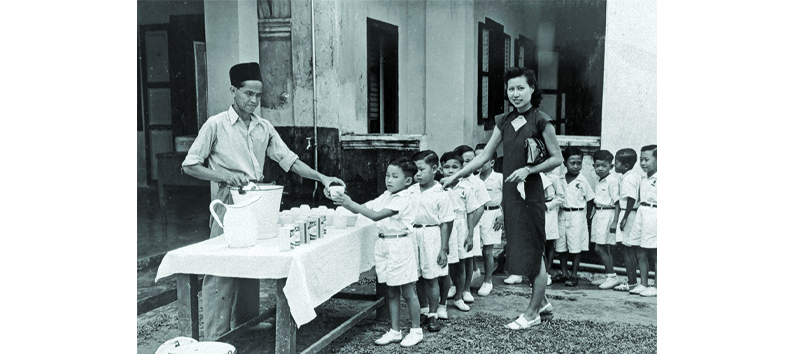 Free milk for children during recess, 1950s. After the war, there was a policy of giving out free milk to needy children. Supplied by UNICEF, the milk was distributed by the Social Welfare Department to welfare institutions and schools. Courtesy of National Archives of Singapore.
Free milk for children during recess, 1950s. After the war, there was a policy of giving out free milk to needy children. Supplied by UNICEF, the milk was distributed by the Social Welfare Department to welfare institutions and schools. Courtesy of National Archives of Singapore.
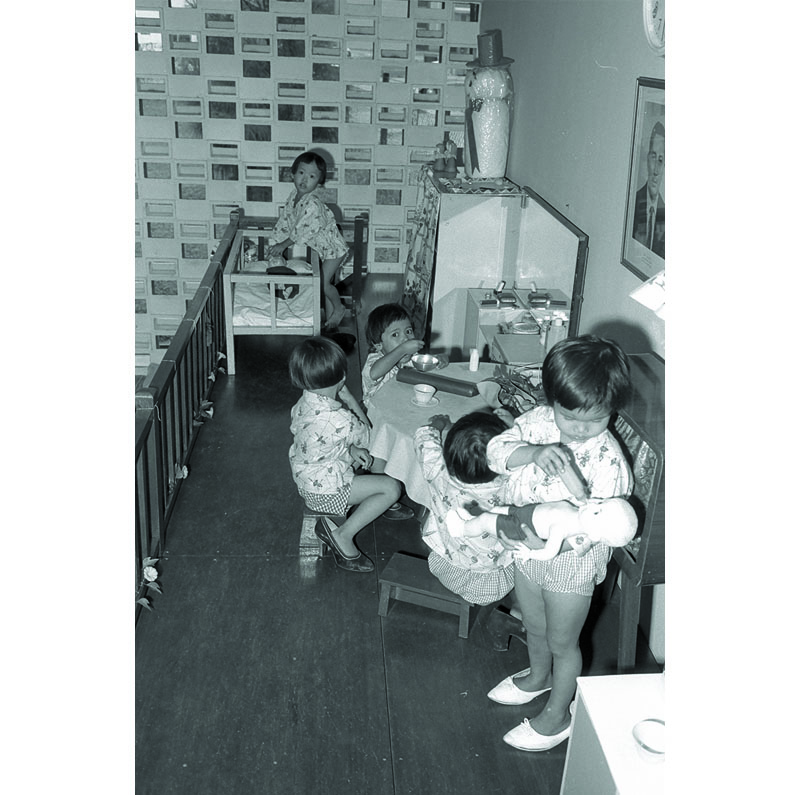 A public crèche, 1963. In the mid-1960s, the Department of Social Welfare ran 10 crèches catering to low-income families. Ministry of Information and the Arts Collection, courtesy of National Archives of Singapore.
A public crèche, 1963. In the mid-1960s, the Department of Social Welfare ran 10 crèches catering to low-income families. Ministry of Information and the Arts Collection, courtesy of National Archives of Singapore.
 An Indian family in Serangoon Road, 1962. This was the time when the iconic businesses of Little India were being founded: Lian Seng for household goods, Haniffa Textiles, Jothi flower shop and Mustafa, which started out as a food stall. Courtesy of National Archives of Singapore.
An Indian family in Serangoon Road, 1962. This was the time when the iconic businesses of Little India were being founded: Lian Seng for household goods, Haniffa Textiles, Jothi flower shop and Mustafa, which started out as a food stall. Courtesy of National Archives of Singapore.
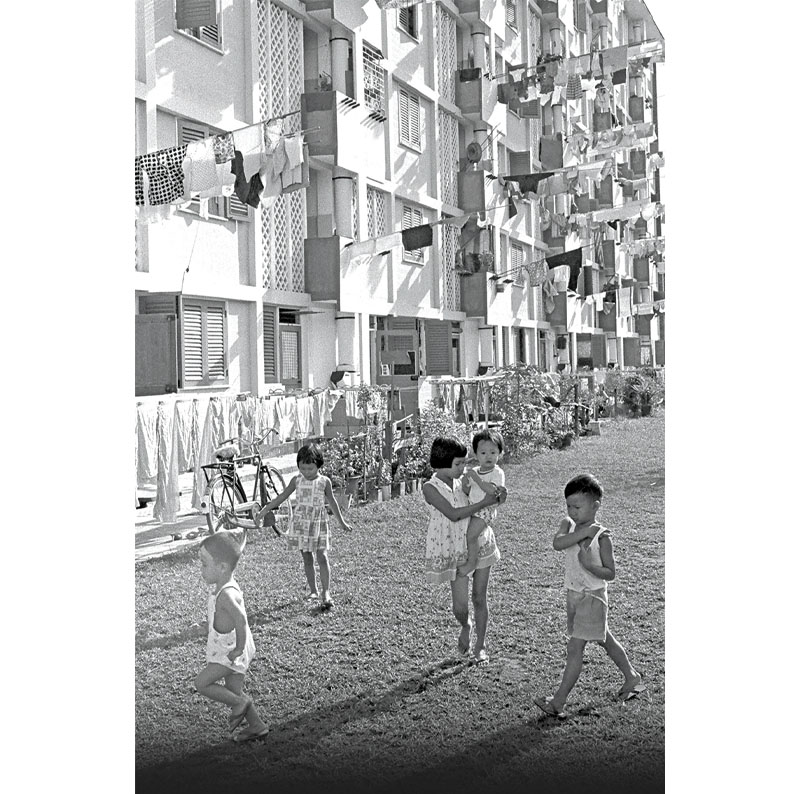 Bukit Merah estate, 1963. The Housing and Development Board, established in 1960, was set up to alleviate the severe housing shortage in Singapore. By the time of Singapore’s independence, it had built 54,430 flats. Ministry of Information and the Arts Collection, courtesy of National Archives of Singapore.
Bukit Merah estate, 1963. The Housing and Development Board, established in 1960, was set up to alleviate the severe housing shortage in Singapore. By the time of Singapore’s independence, it had built 54,430 flats. Ministry of Information and the Arts Collection, courtesy of National Archives of Singapore.
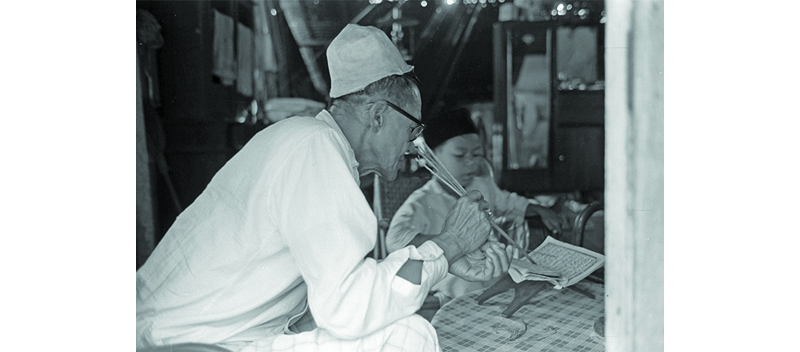 Qur’an lesson, Katong, 1962. In 1959, there were 12 madrasah (Islamic religious schools) in Singapore, increasing to 28 by 1962. Photo by Wong Ken Foo (K.F. Wong). Courtesy of National Archives of Singapore.
Qur’an lesson, Katong, 1962. In 1959, there were 12 madrasah (Islamic religious schools) in Singapore, increasing to 28 by 1962. Photo by Wong Ken Foo (K.F. Wong). Courtesy of National Archives of Singapore.
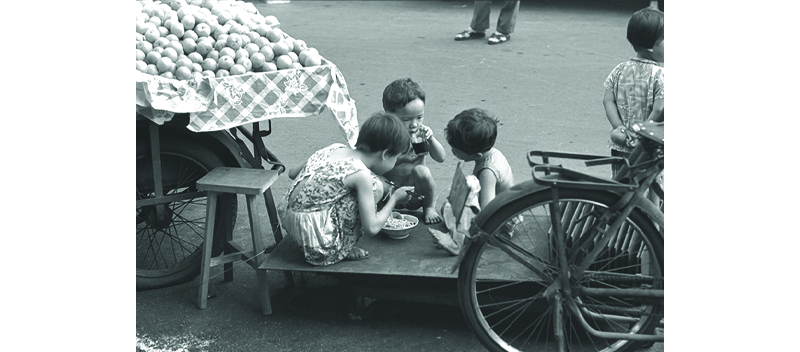 Sharing a bowl of noodles by the roadside, 1962. Photo by Wong Ken Foo (K.F.Wong). Courtesy of National Archives of Singapore.
Sharing a bowl of noodles by the roadside, 1962. Photo by Wong Ken Foo (K.F.Wong). Courtesy of National Archives of Singapore.
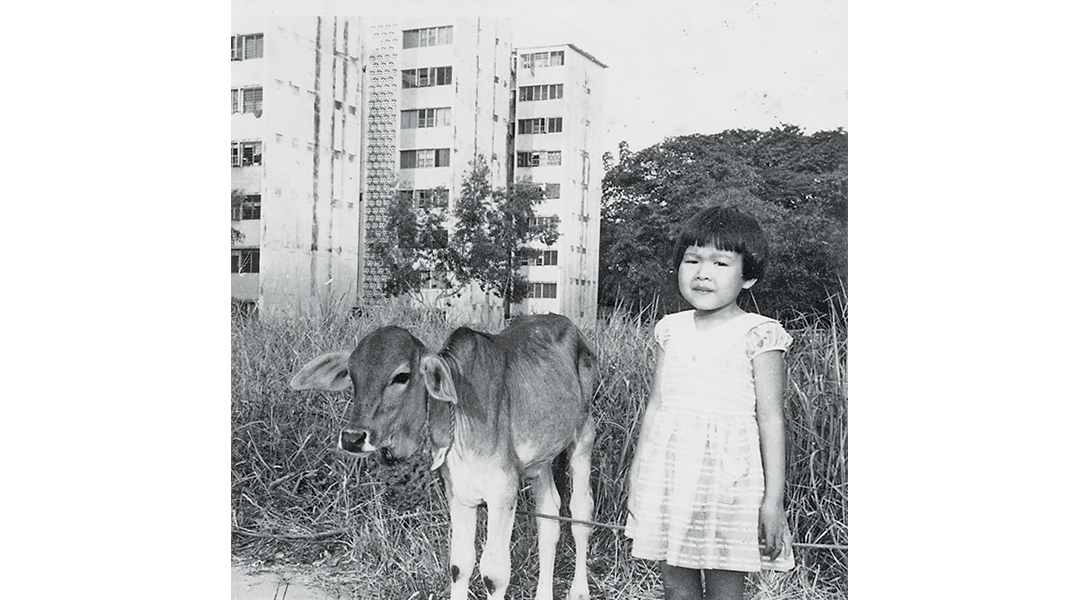 Girl posing with an Indian milkman’s calf, with the Winstedt Road flats in the background, 1961. Lau Nyeng Siang, from “Family and Friends: A Singapore Album” organised by Nexus, National Museum of Singapore and Landmark Books.
Girl posing with an Indian milkman’s calf, with the Winstedt Road flats in the background, 1961. Lau Nyeng Siang, from “Family and Friends: A Singapore Album” organised by Nexus, National Museum of Singapore and Landmark Books.
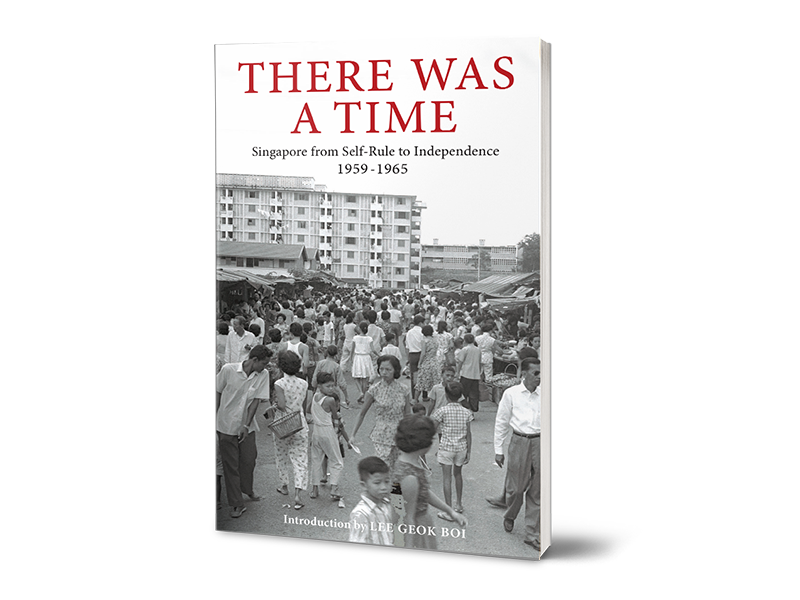 There Was a Time: Singapore from Self-Rule to Independence, 1959–1965 – produced by Landmark Books in collaboration with the National Archives of Singapore (NAS) – is available for reference at the Lee Kong Chian Reference Library and for loan at selected public libraries (Call nos.: RSING 959.5705 THE-[HIS] and SING 959.5705 THE). Comprising some 238 images, largely taken from the collections of the NAS, the 288-page pictorial book also retails at major bookshops in Singapore.
There Was a Time: Singapore from Self-Rule to Independence, 1959–1965 – produced by Landmark Books in collaboration with the National Archives of Singapore (NAS) – is available for reference at the Lee Kong Chian Reference Library and for loan at selected public libraries (Call nos.: RSING 959.5705 THE-[HIS] and SING 959.5705 THE). Comprising some 238 images, largely taken from the collections of the NAS, the 288-page pictorial book also retails at major bookshops in Singapore.

